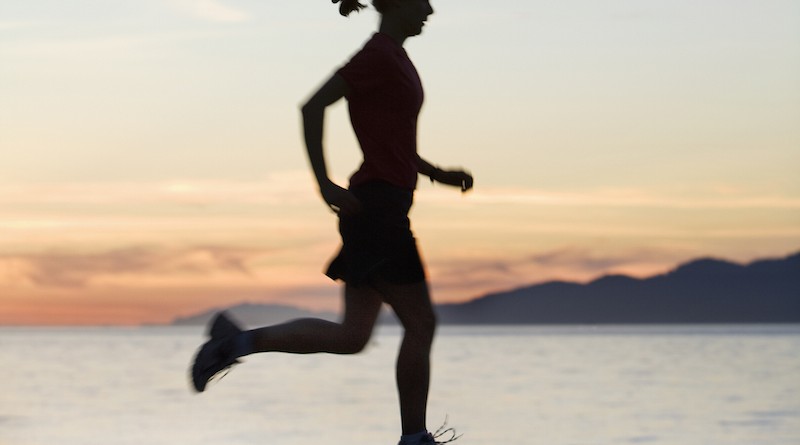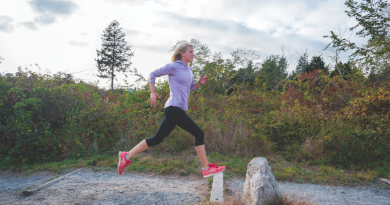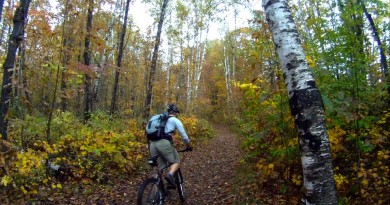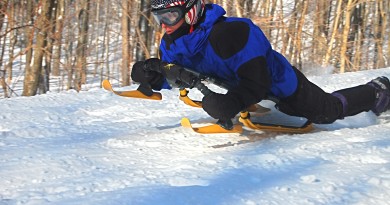It’s a Hill, Get Over It
My husband loves running hills. He’s spent pretty much every summer of his life running mountains here in Vermont and in Colorado. He took his three daughters up Long’s Peak (elev. 14,259 feet) when they were as young as 7. His idea of fun is a one-day sprint up Wyoming’s Grand Teton and back. He lives for anything that involves a race to the top.
Me? Not so much. If he’s a mountain goat, I’m a turtle. I move slowly, steadily, predictably and, usually, as if I’m carrying my house on my back.
When I moved to Vermont from coastal Connecticut 15 years ago, I thought that would change. The summer before making the move, I was training for my first distance event, the Lake Placid Ironman. I was looking forward to the 112-mile bike ride—my strength. I was a decent swimmer so 2.5 miles—two laps around Mirror Lake—seemed doable. But running a marathon after that? And running what seemed, compared to the Connecticut flatlands, a hilly course? That part I dreaded.
Each weekend I spent in Vermont, I tried to run something steeper than an I95 on-ramp. I would plot my runs accordingly. In Waterbury Center there was the Ripley Ripple, a loop that ascended mile after mile with five short steep sections. I’d try to sprint as far as I could up Stowe’s Pinnacle trail or Charlotte’s Mt. Philo road.
As I attacked hills one by one, I stopped looking at my watch and instead would study every little contour of the landscape. My goal was no longer to reach a certain speed per mile or complete the route in a certain time. It was simply to make it up that damn hill without walking.
I’d distract myself by staring at the trees and the sky, anything not to look at the pavement or trail rising ahead. There were waypoints I’d mark off. “Run to the tree with the signpost, then you can walk,” I’d say to myself. Or, “Just make it over the next little knoll and you’ll be there.” With these goals ahead of me, I’d charge the incline like a general, fists pumping, heart pounding, legs burning and gasping as I reached the top.
Each little rise I made without breaking stride became a small victory. I realized for the first time in my life that I wasn’t racing time, I wasn’t racing anyone else, I wasn’t racing at all: I was just simply pushing myself.
No longer would I think about the entire 8- or 10- or 17-mile training runs I had to do. Instead, I’d just focus on the hills along the way. If I could get over those, the rest of the run would be a cakewalk.
Gradually, the hills got easier and as they did, I’d take new routes, trying for steeper or longer inclines. My times didn’t improve much, but my attitude did.
At work, a project that once felt like an insurmountable marathon became a series of hills. A deadline was the equivalent of “That tree with the sign post.”
I stopped comparing myself with my training partners. I stopped worrying about where I stood in the larger race of life.
All I worried about was reaching the top of each little hill.
Three weeks before the Ironman I was riding in a shorter race when a car pulled out of a driveway. It didn’t see me. I veered away sharply. I avoided the car but crashed.
It was not a bad crash, but as I stood up and felt my shoulder I knew what the doctor and X rays would later confirm: I had broken a collarbone badly and torn my rotator cuff. Racing Lake Placid would be out of the question.
The Ironman I’d been training a year for, dedicating hours of my days to, was suddenly taken away. I was crushed. But I was also determined not to lose the strength I’d been building. I rode a stationary bike. I did sit ups. I walked the hills I once ran.
Two weeks before the race, some friends convinced me to do a short bike ride. Wearing a brace on my shoulder, I found I could steer well enough. A week before the race, again wearing the brace, I ran six miles. Two days before the race, I swam one lap around Mirror Lake, using the one-arm training stroke my Masters swim coach had taught us.
The morning of the race, more than 1800 people were lined up at the start. I watched them go off and then waded into the churning waters behind them. I finished the first lap alone and watched the leaders fly by me on the second lap. When I got to the transition area, it was easy to find my bike: there were only six left.
I rode alone for the first few miles then caught up to a cyclist. My heart started to pump as I passed him, that old competitive spirit kicking in until I realized he was in his seventies. I laughed at myself, exchanged some words and rode on.
For the first time in a race, I was riding in the very back of the pack. There were plenty of people suffering, some overweight, some older, some just simply not prepared. They didn’t care. They were not out there to win but just to finish. I relaxed, slowed down and began to truly enjoy the race.
As I started the run, that feeling didn’t subside. After three weeks off, it felt good to stretch my legs again and to appreciate the simple fact that I could use them. I ran slowly and steadily at my own turtle pace. I looked around at the landscape, I smiled and talked with other runners and when it came to the toughest hills, I broke them down one by one into sections, ran as far as I could and then walked.
And that was ok. I finished.




